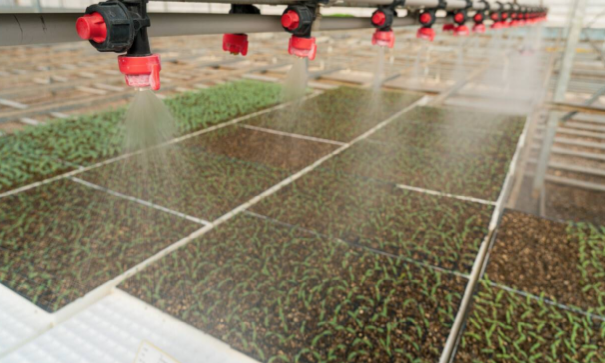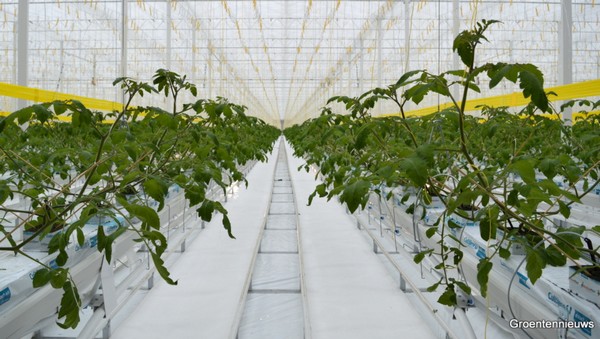Kazakhstan is a country with vast lands, yet its greenhouse industry is still in its infancy. While the Netherlands, with its small size, manages to feed half of the world’s population through high-tech greenhouses, Kazakhstan struggles to keep up. The 13th International Exhibition “Greenhouses. Horticulture. Irrigation. Fertilizers. Flowers” in Almaty brought together experts to discuss the current and future state of the greenhouse sector in Kazakhstan.
According to the latest data from the Food and Agriculture Organization (FAO), Kazakhstan’s vegetable production per capita is still relatively low, with only 147.9 kg/person/year compared to the global average of 198.6 kg/person/year. This is partly due to the limited use of advanced technologies, including high-tech greenhouses, which can increase production and improve the quality of crops.
In addition, the lack of financing for greenhouse projects has been a major obstacle for the development of the industry. However, the government has recently announced plans to allocate funds to support greenhouse businesses in the country. The Ministry of Agriculture has promised to provide subsidies for the construction of new greenhouses, as well as to reduce taxes for greenhouse growers.
The potential of high-tech greenhouses in Kazakhstan is enormous. By using advanced technologies, such as hydroponics and aeroponics, growers can significantly increase their crop yields while reducing water consumption and minimizing the impact on the environment. Moreover, high-tech greenhouses can extend the growing season, allowing farmers to produce fresh vegetables all year round, even in harsh climatic conditions.
While the greenhouse industry in Kazakhstan is still in its early stages, there is great potential for growth and development. The government’s recent plans to support greenhouse businesses, combined with the use of advanced technologies, can significantly increase vegetable production in the country, improving food security and contributing to the national economy.
According to the Ministry of Agriculture of the Republic of Kazakhstan, the total area of greenhouses in the country is 2,356 hectares, with a production volume of 84,000 tons of vegetables. Most of the greenhouses are located in the southern regions of the country, such as Almaty, Zhambyl, and South Kazakhstan. However, the majority of these greenhouses are constructed using low-quality materials, such as plastic film, which makes them vulnerable to harsh weather conditions.
One of the main challenges facing the greenhouse industry in Kazakhstan is the high cost of construction. Most of the materials used in greenhouse construction are imported, which makes them expensive due to transportation costs and currency fluctuations. Additionally, many farmers in the country lack the necessary expertise and resources to construct and maintain modern, high-tech greenhouses that can withstand extreme weather conditions.
Another challenge is the shortage of skilled labor in the sector. Many young people in Kazakhstan are not interested in working in agriculture, which has led to a shortage of workers for greenhouse farms. Additionally, the government’s efforts to attract foreign labor have not been very successful due to bureaucratic obstacles and language barriers.
Despite these challenges, Kazakhstan has immense potential for the development of the greenhouse sector. The country has a vast land area, which can be utilized for the construction of modern greenhouses. Furthermore, the favorable climatic conditions in the southern regions of the country make it possible to grow a wide variety of crops throughout the year.
The government of Kazakhstan has recognized the importance of the greenhouse sector and has taken steps to support its development. In 2021, the Ministry of Agriculture announced a plan to increase the area of greenhouses in the country to 5,000 hectares by 2025. Additionally, the government has allocated funds for the construction of modern greenhouse farms and the training of farmers in modern greenhouse technologies.
Greenhouse farming in Kazakhstan faces various challenges, one of which is funding. While the government has programs for providing revolving funds for spring fieldwork, the budget allocated may not cover the expenses for greenhouse cultivation. In addition, farmers have to deal with high costs of electricity, gas, and coal. To address these issues, the government has approved plans to subsidize up to 50% of the costs for electricity and gas. The subsidy mechanisms are still being discussed, but options include using meters or subsidizing per hectare of greenhouse. The subsidy amount will depend on the type of technology used, with industrial greenhouse complexes receiving the highest subsidies.
According to recent discussions in the Ministry of Agriculture and the working group, the existing level of funding for greenhouse investment projects is insufficient, and there are plans to increase the subsidy rates from 25% to 30%. While the government is taking steps to support greenhouse farming, there are still challenges that need to be addressed to improve the efficiency and profitability of this sector in Kazakhstan.










